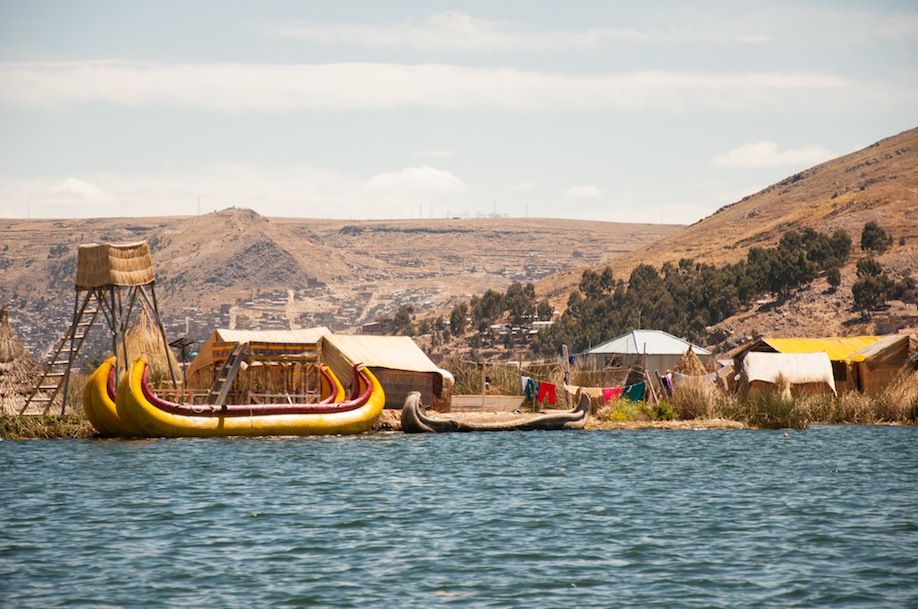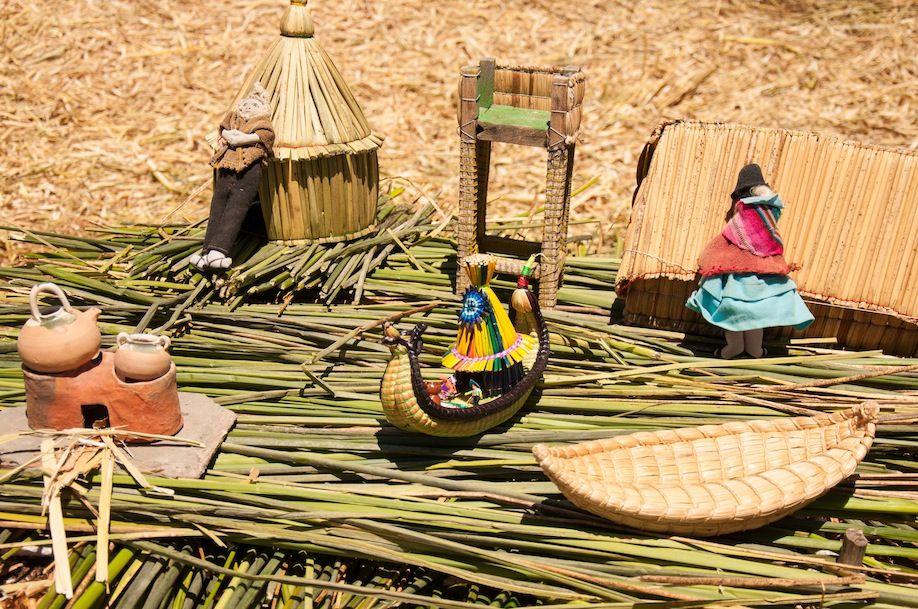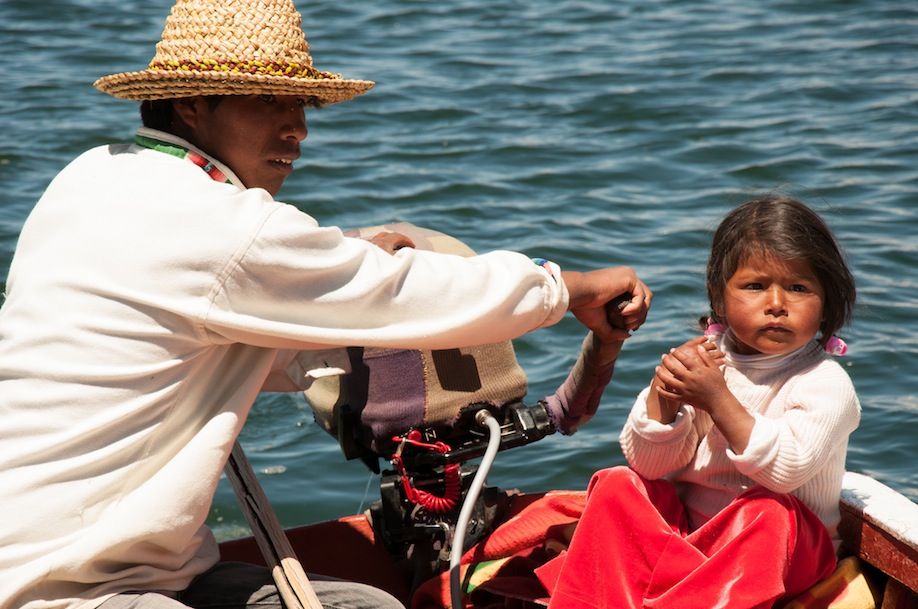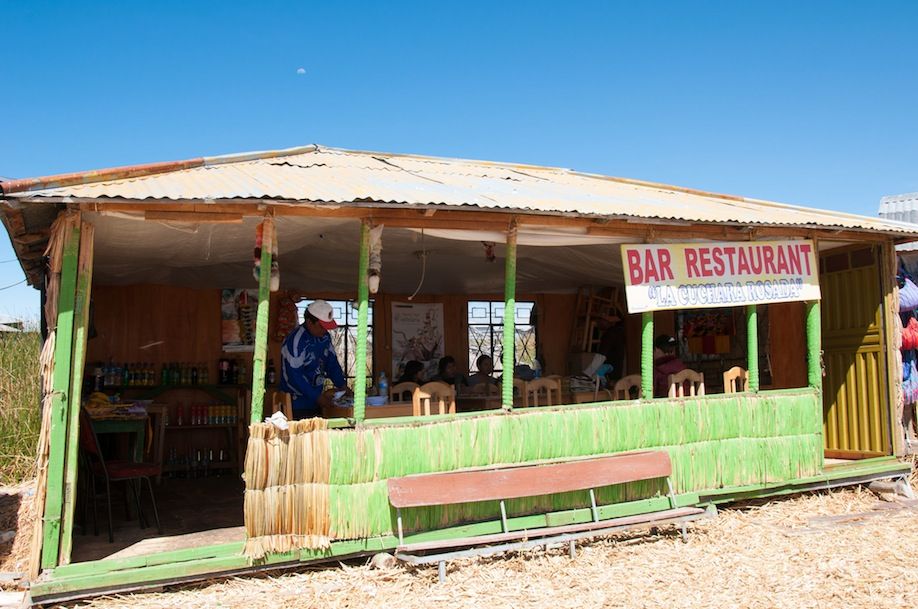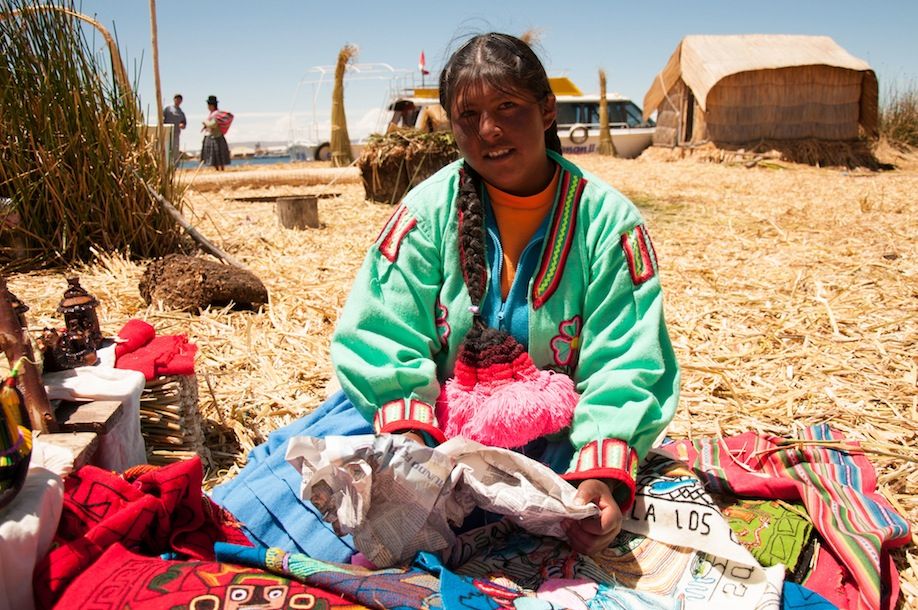Some places in this world are like taken out of a fairy tale. Traveling to Uros Islands in Peru, is like taking a voyage to an almost story book like setting, while also traveling back in time.
Floating in the middle of the massive Lake Titicaca, shared by the countries of Peru and Bolivia, these are a set of around fifty man-made islands. This is where the Uru people and their descendants live.
One of the main islands in Uros
About 500 years ago, when the Inca Empire dominated this region of South America, the Uros felt oppressed. They had to pay heavy taxes to the Incas and, sometimes, were even forced to work as slaves. A hard life combined with a large dose of creativity, drove them to escape to the middle of this lake that looks more like a sea. Initially living on boats and rafts, they eventually started settling down… in the water! Using local reed plants, the same ones their boats were built with, they started assembling floating islands.
Fast forward 500 years, customs and traditions of the Uru people have really changed. Although a lot of things have been lost on the way, the fact remains that they are still living on these floating islands. As long as a fire doesn’t happen, they are surprisingly resistant!
Once upon a time removed from the mainland and “civilization”, the people living in Uros Islands are not so disconnected anymore. Boats with visitors arrive everyday to some of the islands, making this type of trip one of the touristic highlights in the region.
It’s interesting to visit the floating islands, to understand how it is possible to live in the middle of a lake – you don’t get to see this everyday! You’ll be face to face with a very traditional lifestyle and amazed at how many uses the reed plant can have: from edible to medicinal or construction.

Locals welcoming visitors on the most touristic island in Uros
It is wise to moderate your expectations when coming to Uros, though. Colorful and lively as it is, this area has become extremely touristic. So much that I wonder, if tourism was non existent, would anyone still be living in floating mode? The islands now-a-days are not as rustic as in the past. Not only do they have a basic school and a church, some houses also have TV sets (run with solar power) and there is even a local radio station, catering to the local population of almost 5000 people.
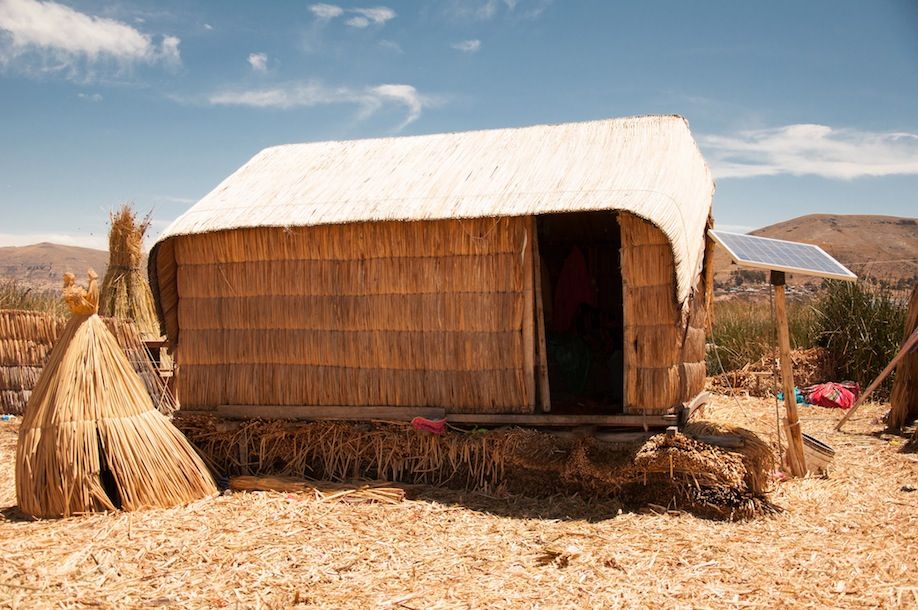
A typical reed house in Uros, powered with solar energy
Arriving by motor boat to one of the main islands, some of the local ladies welcome you with traditional chants. This is a way of luring you in to buy their handicrafts. But truth be told: they have very pretty pieces, that according to the local tradition are done with reed.

>The most touristic island in Lake Titicaca
Uros Islands miniature model made with reed
You may want to hire a smaller boat while in the main island, for the sake of visiting near-by smaller islands. If you are carrying expensive camera equipment with you, using a waterproof camera bag might not be a bad idea. Things don’t tend to get too wet, but you may encounter the occasional splash.
Not all of the islands are open to visitors. Yet the one that boat rowers will take you to by default, epitomizes how touristic the place has become. Not only does it include several souvenir stalls, but also a restaurant!
The only restaurant in Uros
After having a taste of the local cuisine, which consists of basic preparations of fresh fish from the lake and white rice, photographing the surroundings is definitely the best activity to keep you entertained around here.
Locals don’t mind being photographed (they make a living with curious tourists after all) and, some of them, are even eager to learn how to photograph themselves:
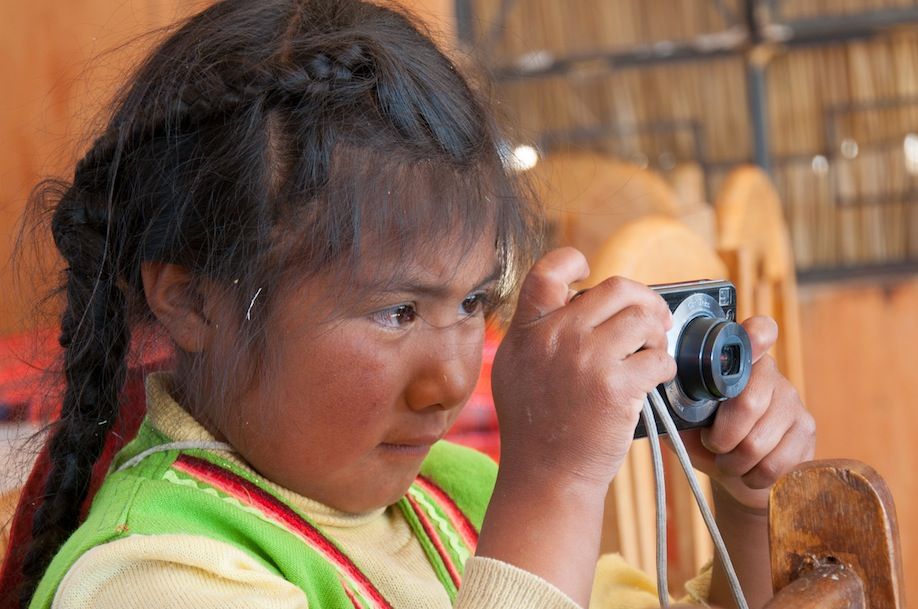
Local girl learning how to take photos with a tourist’s camera
On bright sunny days things to tend to look pretty. But the fact that a given scenery looks good to the naked eye, does not mean it will look the same on camera. Unfortunately, when the sun is shining strongly and there are is a lot of bright light, photos don’t tend to turn out too good. If you’re in a beautiful place that you want to capture images at, I’d suggest to wait until golden hour. But if you are there during limited time, don’t let anything stop you! Go for it, keeping in mind a few simple tricks.
If you want to avoid annoying shadows, specially when taking portraits, the easiest thing would be to photograph in the shade. Colors and textures will be more uniform.
Because of exposure to the sun the Uro people tend to have burnt skin
One of the best add-ons you can get for your camera if you like shooting outdoors is a circular polarising filter. Polarizers help avoid reflections and work wonders for dark blue skies. The goal it to avoid the excess brightness without losing out on color depth. If you don’t have this accessory, then turn your camera to manual mode and play around with the settings. Increasing the shutter speed or decreasing the aperture will work to avoid over exposure. If all else fails, get a UV camera lens filter and it should help you out!

Kid playing while her Mom tries to make a living selling souvenirs
If you like colorful places and taking portraits of interesting looking people, a day trip to Uros Islands is definitely something to be considered when in Peru. History, impressive surroundings and, most of all, a very alternative life-style will guarantee a very original experience…. specially for those who decide to spend the night doing a homestay on the islands!
Zara Quiroga
Zara is a Portuguese blogger who quit her job in Dubai in 2011 to travel around the world with her now husband Ashray, from India. They’re the team behind Backpack ME, a travel site that aims to share tips and ideas with people all over the place, inspiring them to go travel, no matter where they come from!
A&Z are East meets West and Backpack ME is all about a multicultural perspective on travel: http://www.bkpk.me
Say HI on Twitter and join them on Facebook too.


